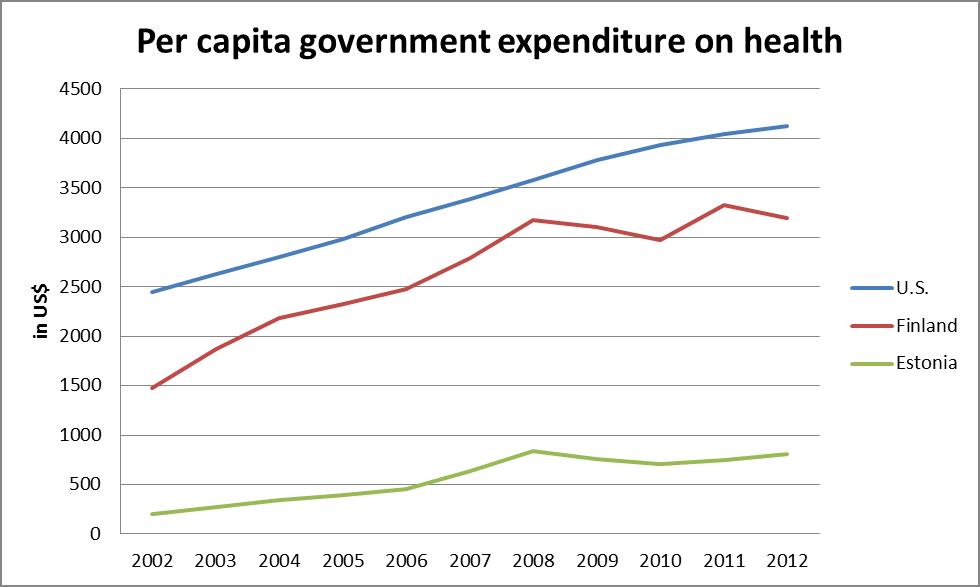I’ve been trolling through World Health Organization data for the United States, Finland, and Estonia. (Yes, more fun with data!) For anyone interested in global comparisons in all things health-related, WHO is the place for you. It is a treasure trove. I’m only at the beginning of this part of my project (or any part of my project, to be completely honest) and there is lots to look at, but here are a few things that have caught my attention so far.
In 2011, Finland had more mental health outpatient facilities, beds for mental health in general hospitals, community residential facilities, and more beds in those facilities than the United States. The latter is most striking with Finland having 134 beds per 100,000 people compared to only 22 in the U.S. On the other hand, the United States has slightly more mental hospitals compared to Finland and more beds in those hospitals. (According to the only data available on these variables, Estonia has more mental hospitals than either Finland or the U.S.). This dramatic difference in community-based facilities highlights a significant gap in U.S. services for the mentally ill. If you need to put a face on why this matters, read this story in The Washington Post. People cannot get into hospitals when they need it because of lack of beds and others can be held in the hospital against their will because there is no place to discharge them to. Not surprisingly, it costs much less to support someone in the community than to keep them in a hospital. Why then is the U.S. not investing more in community-based resources? (A topic for another day).
I also find it interesting that, even with universal coverage, Finland and Estonia have lower per capita government expenditures on health than the U.S. and, in fact, since 2008 government expenditures in Finland have fallen. (See figure, based on World Health Organization Global Health Observatory data).
So even though most of us pay something for our health care coverage, for many of us our employers pay something as well, and there is great variation in terms of the levels and type of coverage we each can afford, the U.S. government is still spending more per person than two countries where the state provides equal coverage for everyone.
Yes, I hear some of you saying, that the citizens pay for it through much higher taxes in Finland and Estonia. That is true. It’s the equal coverage part I’m interested in here. Yet another topic for yet another day – what citizens in each country get for the taxes they pay and how this relates to quality of health care and overall health outcomes.


Leave a Reply